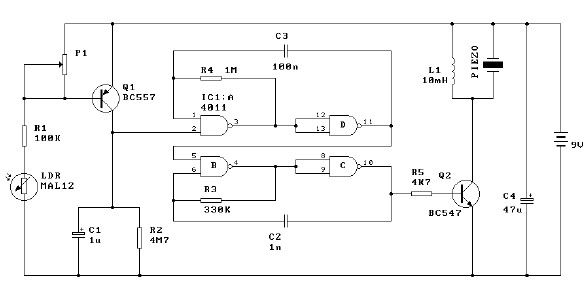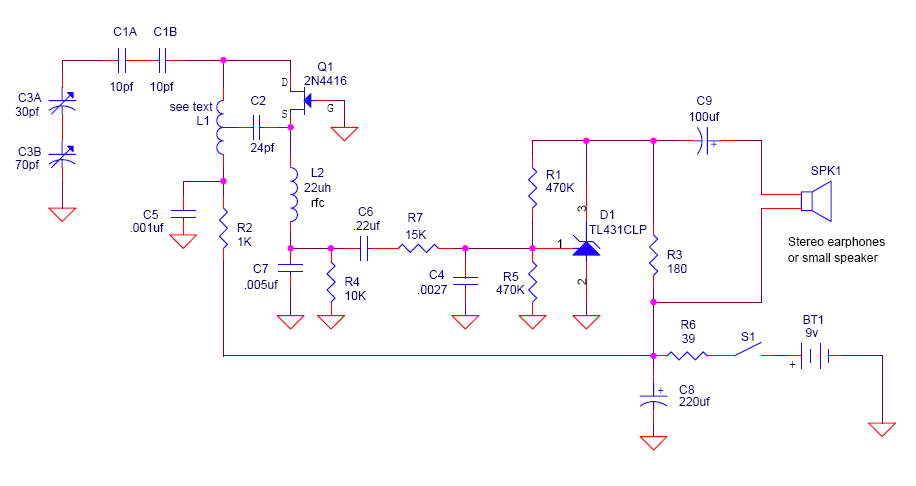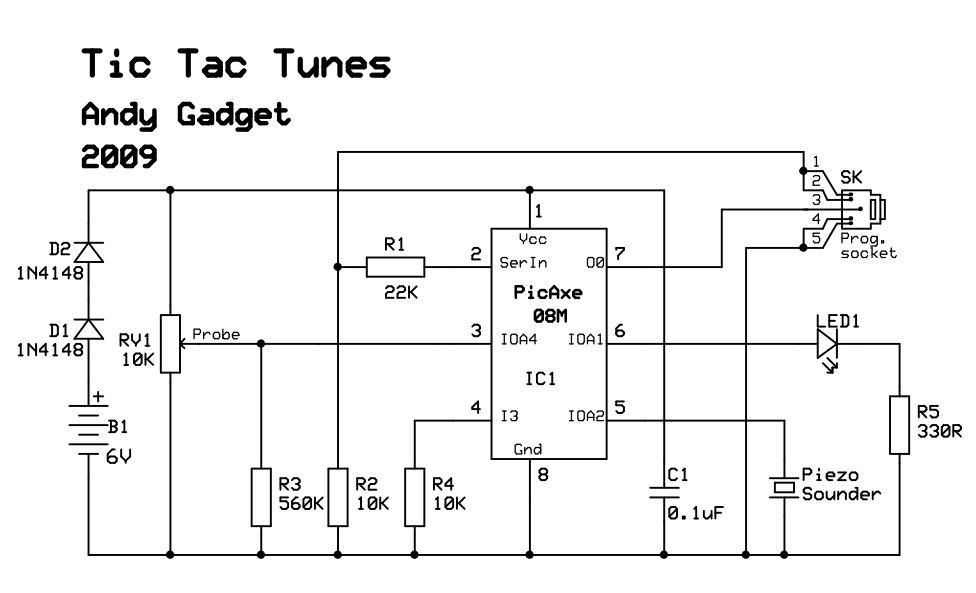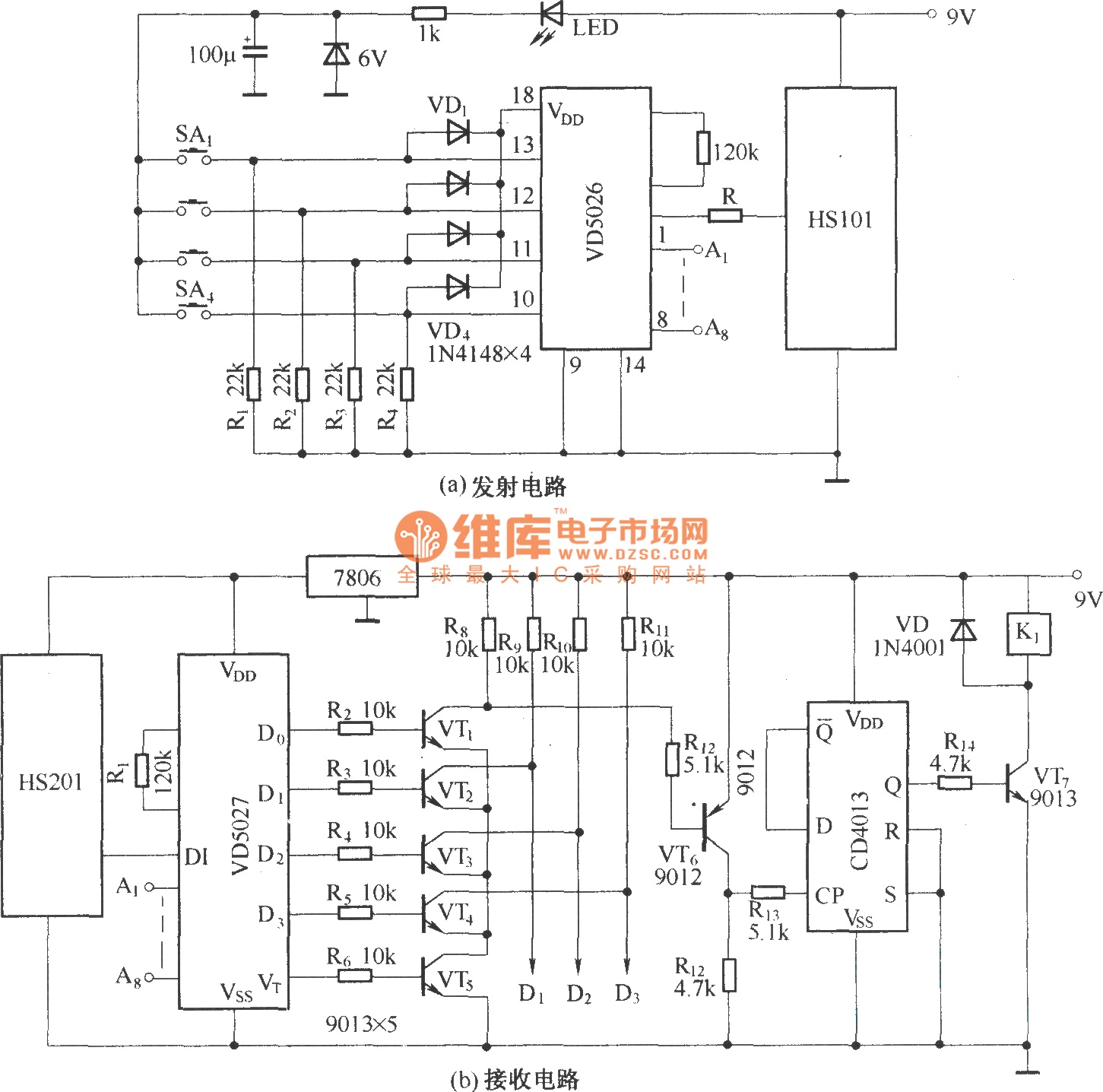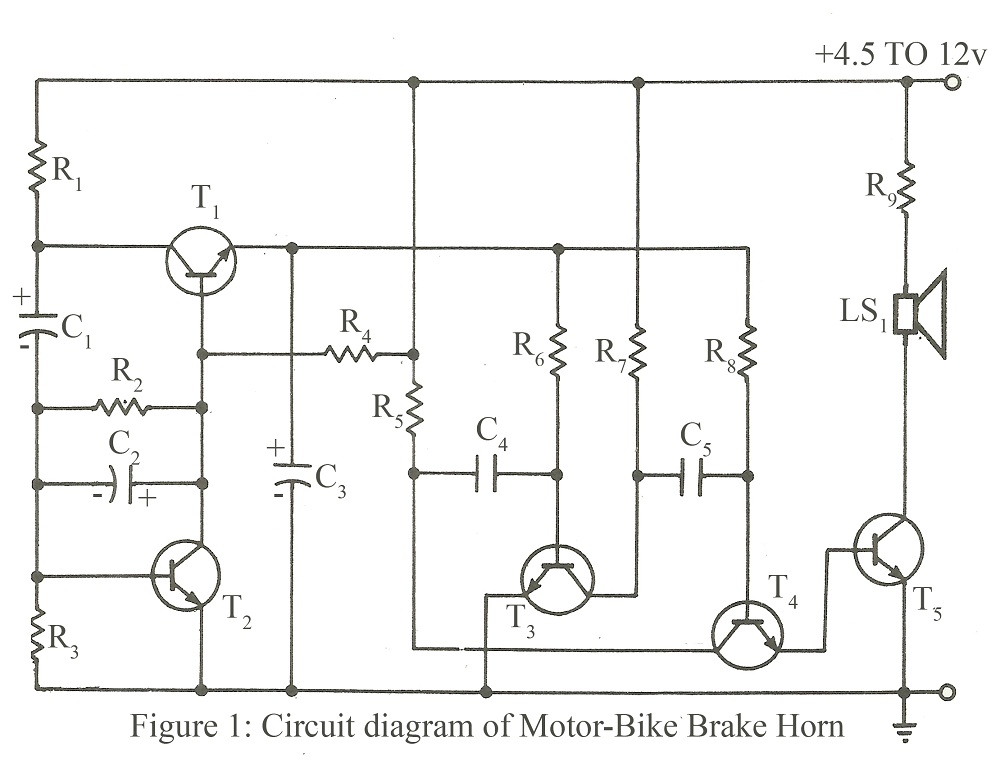
keypad interfacing connection diagram
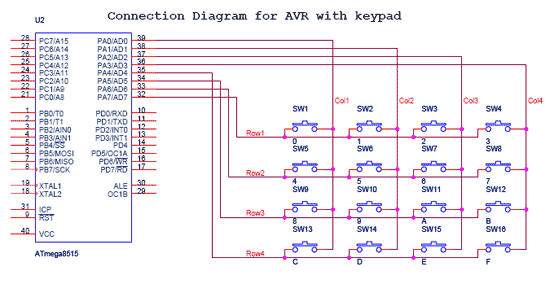
Learn to interface a 4x4 matrix keypad with AVR and 8051 microcontrollers, and program these microcontrollers in C and assembly language for the keypad matrix.
The 4x4 matrix keypad is a popular input device used in various electronic applications, allowing users to input numerical data or commands through a grid of buttons. The keypad consists of 16 keys arranged in a 4-row by 4-column configuration. Each key press connects a specific row and column, enabling the microcontroller to identify which key has been pressed.
To interface a 4x4 matrix keypad with AVR and 8051 microcontrollers, the following components and connections are typically required:
1. **Microcontroller**: Either an AVR (e.g., ATmega series) or an 8051 microcontroller should be selected based on the application requirements. The microcontroller should have enough I/O pins to accommodate the keypad connections.
2. **Keypad Connections**: The rows and columns of the keypad are connected to the digital I/O pins of the microcontroller. For a 4x4 matrix keypad, four pins will be assigned to the rows and four pins to the columns.
3. **Pull-up Resistors**: It is advisable to use pull-up resistors on the column lines to ensure that the logic level remains high when no key is pressed. This helps prevent floating inputs that could lead to erratic behavior.
4. **Key Scanning Algorithm**: The microcontroller must implement a key scanning algorithm to detect key presses. The basic process involves setting one row low at a time and reading the column lines. If a column reads low, it indicates that a key in that row and column intersection is pressed. This process is repeated for each row.
5. **Programming**: The programming can be done in both C and assembly language. The C programming language offers higher-level abstractions and is generally easier to use, while assembly language provides more control over hardware and can yield higher performance. The program should include functions to initialize the keypad, scan for key presses, and handle the input accordingly.
6. **Debouncing**: Keypad inputs should be debounced to prevent multiple readings from a single key press. This can be achieved by implementing a short delay after a key press is detected before re-checking the state of the key.
By following these guidelines, the 4x4 matrix keypad can be effectively interfaced with AVR and 8051 microcontrollers, allowing for a wide range of applications in embedded systems, user interfaces, and control systems.learn to interface 4x4 matrix keypad with AVR and 8051 microcontroller and program AVR microcontroller and 8051 microcontroller in C and assembly for keypad matrix.. 🔗 External reference
The 4x4 matrix keypad is a popular input device used in various electronic applications, allowing users to input numerical data or commands through a grid of buttons. The keypad consists of 16 keys arranged in a 4-row by 4-column configuration. Each key press connects a specific row and column, enabling the microcontroller to identify which key has been pressed.
To interface a 4x4 matrix keypad with AVR and 8051 microcontrollers, the following components and connections are typically required:
1. **Microcontroller**: Either an AVR (e.g., ATmega series) or an 8051 microcontroller should be selected based on the application requirements. The microcontroller should have enough I/O pins to accommodate the keypad connections.
2. **Keypad Connections**: The rows and columns of the keypad are connected to the digital I/O pins of the microcontroller. For a 4x4 matrix keypad, four pins will be assigned to the rows and four pins to the columns.
3. **Pull-up Resistors**: It is advisable to use pull-up resistors on the column lines to ensure that the logic level remains high when no key is pressed. This helps prevent floating inputs that could lead to erratic behavior.
4. **Key Scanning Algorithm**: The microcontroller must implement a key scanning algorithm to detect key presses. The basic process involves setting one row low at a time and reading the column lines. If a column reads low, it indicates that a key in that row and column intersection is pressed. This process is repeated for each row.
5. **Programming**: The programming can be done in both C and assembly language. The C programming language offers higher-level abstractions and is generally easier to use, while assembly language provides more control over hardware and can yield higher performance. The program should include functions to initialize the keypad, scan for key presses, and handle the input accordingly.
6. **Debouncing**: Keypad inputs should be debounced to prevent multiple readings from a single key press. This can be achieved by implementing a short delay after a key press is detected before re-checking the state of the key.
By following these guidelines, the 4x4 matrix keypad can be effectively interfaced with AVR and 8051 microcontrollers, allowing for a wide range of applications in embedded systems, user interfaces, and control systems.learn to interface 4x4 matrix keypad with AVR and 8051 microcontroller and program AVR microcontroller and 8051 microcontroller in C and assembly for keypad matrix.. 🔗 External reference
